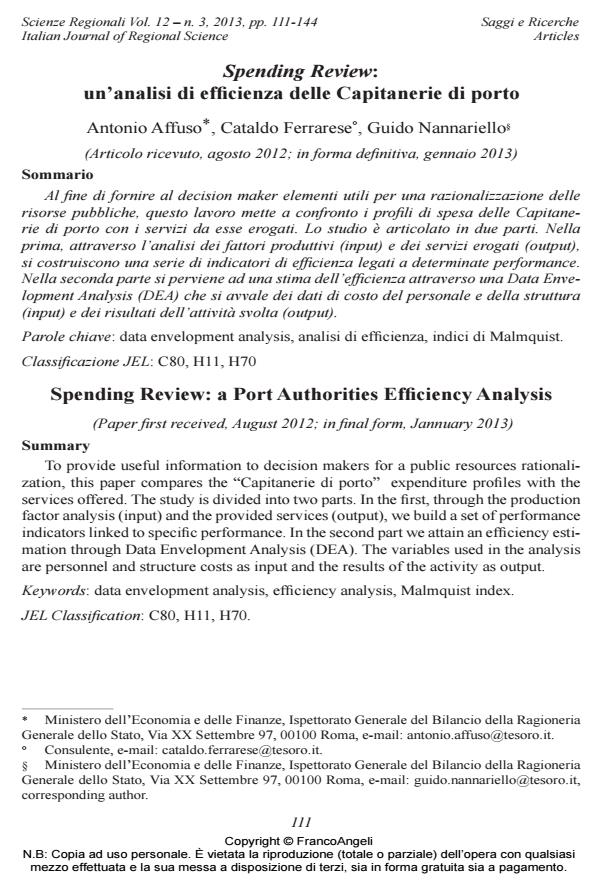Spending Review: un’analisi di efficienza delle Capitanerie di porto
Titolo Rivista SCIENZE REGIONALI
Autori/Curatori Antonio Affuso, Cataldo Ferrarese, Guido Nannariello
Anno di pubblicazione 2013 Fascicolo 2013/3
Lingua Italiano Numero pagine 33 P. 111-143 Dimensione file 772 KB
DOI 10.3280/SCRE2013-003005
Il DOI è il codice a barre della proprietà intellettuale: per saperne di più
clicca qui
Qui sotto puoi vedere in anteprima la prima pagina di questo articolo.
Se questo articolo ti interessa, lo puoi acquistare (e scaricare in formato pdf) seguendo le facili indicazioni per acquistare il download credit. Acquista Download Credits per scaricare questo Articolo in formato PDF

FrancoAngeli è membro della Publishers International Linking Association, Inc (PILA)associazione indipendente e non profit per facilitare (attraverso i servizi tecnologici implementati da CrossRef.org) l’accesso degli studiosi ai contenuti digitali nelle pubblicazioni professionali e scientifiche
Al fine di fornire al decision maker elementi utili per una razionalizzazione delle risorse pubbliche, questo lavoro mette a confronto i profili di spesa delle Capitanerie di porto con i servizi da esse erogati. Lo studio è articolato in due parti. Nella prima, attraverso l’analisi dei fattori produttivi (input) e dei servizi erogati (output), si costruiscono una serie di indicatori di efficienza legati a determinate performance. Nella seconda parte si perviene ad una stima dell’efficienza attraverso una Data Envelopment Analysis (DEA) che si avvale dei dati di costo del personale e della struttura (input) e dei risultati dell’attività svolta (output).
Parole chiave:Data envelopment analysis, analisi di efficienza, indici di Malmquist
Jel codes:C80, H11, H70
Antonio Affuso, Cataldo Ferrarese, Guido Nannariello, Spending Review: un’analisi di efficienza delle Capitanerie di porto in "SCIENZE REGIONALI " 3/2013, pp 111-143, DOI: 10.3280/SCRE2013-003005